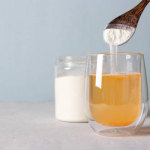In the realm of skincare, chemical exfoliants have taken center stage, offering a range of benefits from rejuvenating dull complexions to combating acne. Among these, alpha hydroxy acids (AHAs) are particularly renowned for their ability to refine and smooth the epidermis. However, when it comes to the popular AHAs glycolic acid and lactic acid, confusion often arises. What exactly makes them different, and how can you determine which one is right for your skin? This article delves into the nuances of glycolic acid and lactic acid, guiding you on your journey to uncovering healthier, more radiant skin.
Understanding Glycolic Acid and Its Skin Benefits

Glycolic acid, a naturally occurring substance derived from sugar cane, is the AHA with the smallest molecular size, allowing it to penetrate the skin deeply and effectively. With this deep penetration, glycolic acid is excellent for exfoliating dead skin cells, promoting cell regeneration, and increasing collagen production. Due to its potency, it’s particularly beneficial for those looking to address fine lines, acne, and uneven skin tone. However, this same quality means glycolic acid can be more irritating to sensitive skin types, making its use best monitored by a professional.
The Soothing Nature of Lactic Acid

Lactic acid, on the other hand, is derived from milk and has a larger molecular size, which results in slower skin absorption and a more gentle exfoliation experience. This quality makes lactic acid an excellent choice for those with sensitive or dry skin, as it not only exfoliates but also moisturizes and reduces the risk of irritation. As a humectant, lactic acid helps the skin retain moisture, leading to a more hydrated and plumped appearance, which in turn can reduce the visibility of fine lines and wrinkles.
Glycolic Acid vs. Lactic Acid: The Key Differences
The primary difference between glycolic acid and lactic acid lies in their molecular structure. Glycolic acid’s smaller molecule allows for deeper and more rapid penetration, making it a more aggressive exfoliant. Its strength can be highly effective but may lead to increased sensitivity and requires careful usage. Lactic acid’s larger molecule size results in a gentler exfoliation process, offering hydration and less risk of irritation, which is why it’s often recommended for those with more sensitive skin conditions or rosacea.
Incorporating Glycolic and Lactic Acids into Your Skincare Routine
Integrating these AHAs into your skincare routine should be approached with care. Begin by testing a small amount of the chosen acid on a discreet skin area to gauge your tolerance. Gradually incorporate the product into your routine, starting with once per week and building up as your skin adjusts. It’s crucial to always pay attention to your skin’s reaction and consult with a dermatologist if you notice any adverse effects.
Can You Use Glycolic Acid and Lactic Acid Together?
While using both glycolic acid and lactic acid together is possible, it’s a combination that should be approached with caution. These acids can complement each other—glycolic acid targeting deeper layers of the skin, while lactic acid offers surface-level exfoliation and moisture. However, due to the increased potential for irritation, alternating the use of these acids and starting low concentration can be a more prudent strategy for most skin types.
Comparative Table: Glycolic Acid vs. Lactic Acid
To better understand the differences between glycolic acid and lactic acid, the following table delineates their key attributes:
| Attribute | Glycolic Acid | Lactic Acid |
|---|---|---|
| Molecular Size | Small | Large |
| Penetration | Deep | Surface-level |
| Exfoliation | Aggressive | Gentle |
| Skin Types | Normal to Oily | Dry and Sensitive |
| Main Benefits | Addresses acne, fine lines, uneven skin tone | Hydrates, reduces irritation, gently exfoliates |
Making the Right Choice for Your Skin
Choosing between glycolic acid and lactic acid for skincare can be a decision based on individual skin needs and preferences. Here are some factors to consider when making the right choice:
- Skin Type:
Glycolic acid is often recommended for normal to oily skin types due to its smaller molecular size, which allows for deeper penetration and exfoliation. Lactic acid, with its larger molecule size, is gentler and more suitable for sensitive or dry skin types. - Exfoliation Level:
Glycolic acid is known for its powerful exfoliating properties, making it effective for treating concerns such as acne, hyperpigmentation, and aging. Lactic acid provides a more mild exfoliation, making it ideal for those with sensitive skin or beginners to chemical exfoliation. - Skin Sensitivity:
Individuals with sensitive skin may find lactic acid to be less irritating compared to glycolic acid due to its larger molecular size and slower penetration. However, both acids can cause irritation if used in high concentrations or too frequently. - Treatment Goals:
Consider your specific skincare concerns when choosing between glycolic acid and lactic acid. Glycolic acid is often favored for targeting fine lines, wrinkles, and acne, while lactic acid can help improve skin texture, tone, and hydration. - Frequency of Use:
Start with a lower concentration and less frequent application when incorporating either glycolic acid or lactic acid into your skincare routine, especially if you are new to chemical exfoliation. Gradually increase the concentration and frequency as tolerated by your skin.
Conclusion
When choosing between glycolic acid and lactic acid, it’s essential to consider your individual skincare needs and concerns. Glycolic acid, with its deeply penetrating abilities, is optimal for those with resilient skin looking to address age-related issues or acne. On the contrary, lactic acid is ideal for individuals seeking gentle exfoliation along with enhanced hydration—perfect for sensitive or drier skin types. Recognize that both AHAs can yield remarkable results for your skin when used responsibly and in alignment with your unique skin profile.
FAQs
Q1: Who should use glycolic acid, and who should opt for lactic acid?
A1: Glycolic acid is commonly recommended for individuals with normal to oily skin that may be prone to acne, hyperpigmentation, and signs of aging. Its small molecular size allows it to penetrate deeply into the skin for effective treatment. In contrast, lactic acid is better suited for those with sensitive or dry skin types, offering gentle exfoliation while also helping to maintain hydration.
Q2: Can glycolic acid or lactic acid cause skin purging?
A2: Yes, both glycolic and lactic acid can cause skin purging as they accelerate skin cell turnover. This might temporarily bring underlying issues like pimples to the surface faster, but the purging phase is generally short-lived.
Q3: How often should I use products that contain glycolic acid or lactic acid?
A3: Start with once or twice a week, adjusting the frequency as your skin acclimates to the product. It is crucial to follow the specific instructions provided by the product’s manufacturer and to monitor your skin’s response to prevent over-exfoliation.
Q4: Should I wear sunscreen when using products that contain glycolic or lactic acid?
A4: Absolutely. Since AHAs can increase photosensitivity, applying a broad-spectrum sunscreen of SPF 30 or higher is essential to protect your skin from potential sun damage every day.
Q5: Can I use glycolic acid or lactic acid if I have rosacea?
A5: While individuals with rosacea are often advised to steer clear of harsh ingredients, some may find lactic acid’s hydrating properties tolerable. However, due to the potential risk of irritation, it is essential to consult with a dermatologist before incorporating AHAs into your skincare routine.


